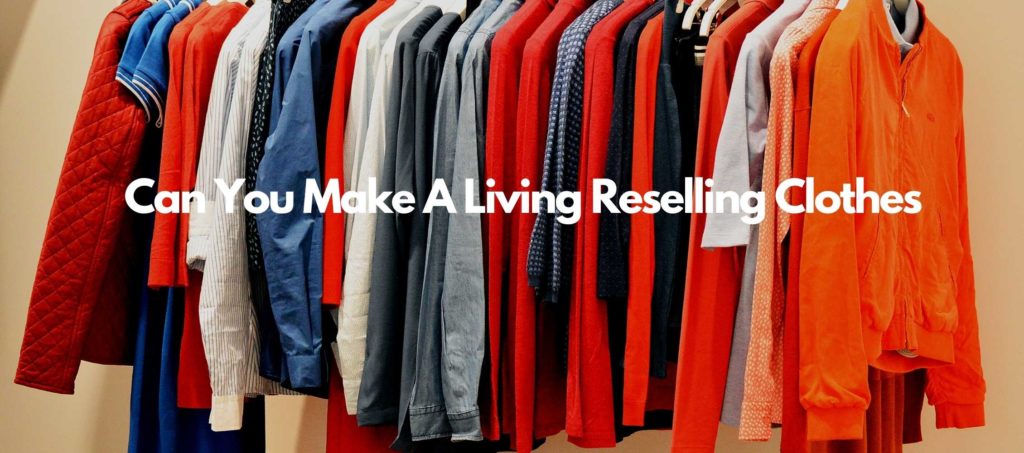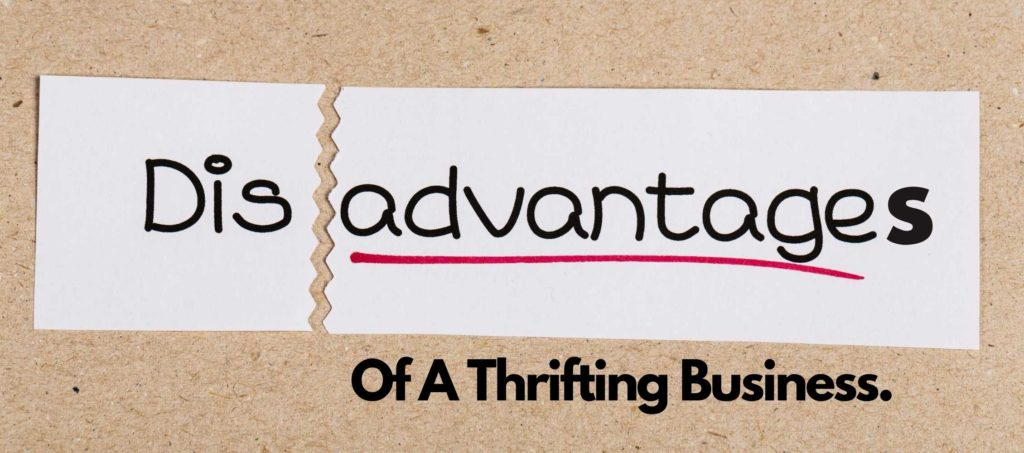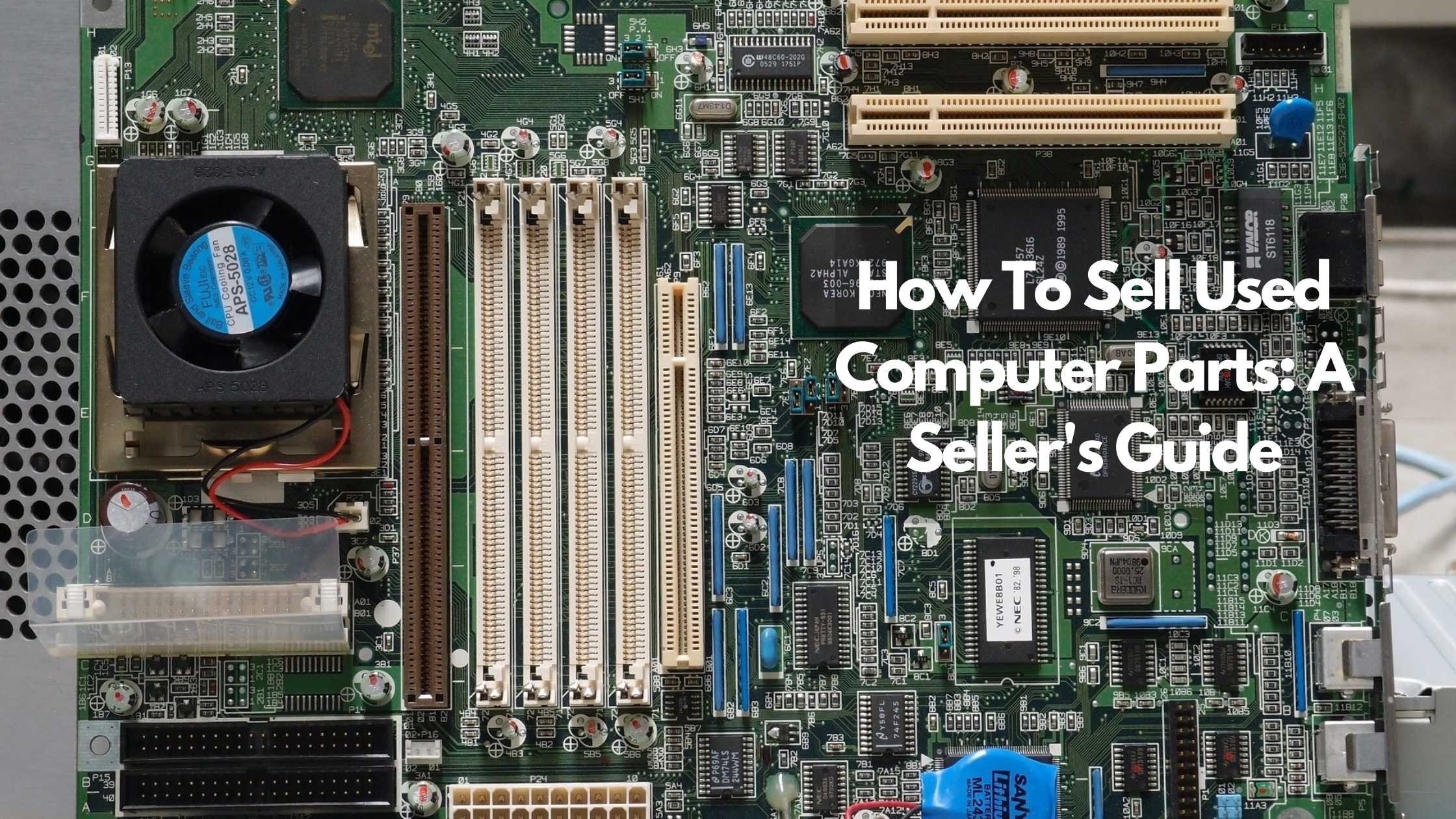
Can You Make a Living Thrifting?

When I was looking around at a potential side business, I came across buying and selling used items as an option. But, I wondered how much you could make. After doing some research, I put together this helpful article to explain how much you can make from thrifting.
So, can you make a living thrifting? Yes, it is possible to make a living thrifting. However, you will need to source your items from multiple places, not just thrift stores. This is because you can’t predict what inventory will be available and whether they will be what your customers want.
Read on to discover what sort of income you can expect from thrifting. As well as ways to increase the amount of money you make from your thrifting business.

Can you make a living reselling clothes?
Making a living thrifting is 100% possible. There are many stories of people who have quit their jobs to expand on their thrifting side business.
Most people start part-time, and then once they are confident in their abilities after three to six months, quit their job to focus on their full business time.
It is challenging to earn a full-time income when you are working fulltime as well. This is because, at the end of a day, you don’t have much time or energy to put your full focus into your business.
The general process people use to make a living reselling clothes is:
- Start sourcing items and making initial sales
- Increase sales.
- Once you are confident in your ability to make consistent income and pay for your expenses, you can now run your thrifting business.
- Quit your job and do it full time
According to Business Insider, a lady named Alexandra Marquez makes US$5,000 a month with her reselling business. She originally started her business in college.
When she got a job after graduating, she continued running her thrifting side business for about a year. She then quit her job and went full time with her thrifting business.
Although the business model is to source clothes from thrift stores, you can also source clothes from other places. Examples are liquidation suppliers and estate sales.
This is something you can do later on once you are more established and have more capital to acquire your inventory.
You can start by buying a few items. It is best to continue small until you have set up everything to run your business successfully. Once you know your targeted audience and what clothes they prefer, you can venture out to buy from liquidators. Click here to learn how much to sell used clothes for. If you want to specialize in baby clothes, check out this complete guide to selling baby clothes.
Now that I have covered whether it is possible to make a living thrifting, I will explain if it is good business.
Click here to learn how to earn an extra $1000 a month thrifting for profit.

What are the advantages of a thrifting business?
Although it is possible to make a living thrifting, it has its advantages and drawbacks.
The advantages of a thrifting business are listed below.
- You can do it in your spare time and for fun.
Some people love to shop, myself included. So, when you are out and about running errands, you can pop into thrift stores and source some products for your business.
Many people have a natural affinity for buying and selling physical products and are naturally motivated to create a successful thrifting business.
Others may have worked in retail or a thrift store and know what products customers love and how to talk to potential customers. So, a thrifting business is a match between their previous skills and experience and their interest in running their own business.
- You are providing a valuable service to others.
Many people prefer not to go to thrift stores and prefer to buy their clothing online. When you source products for them and offer them at a reasonable price, customers are grateful.
Some people may be unaware of thrift stores and don’t go to them. As a result, you are the missing link between them getting quality clothes at an affordable price.
It is a win-win for you, the consumer, and the platform you sell your clothes on. Many online marketplaces, websites, and platforms charge a small commission for each sale made.
When you take advantage of their reputation, it makes your products sell faster and increases their revenue.
- It is easy to get started.
You can start your own thrifting business without a lot of upfront capital. You can get started with under $100. This would cover your first items, packing materials, and small fees related to getting your business set up online.
Although this advantage is not unique to a thrifting business, it is a significant advantage because you don’t need to spend exorbitant amounts of money on acquiring inventory.
This means there isn’t much risk to getting started, and if you hate it and fail, then you didn’t pour too much time, money, and effort down the drain.

What are the disadvantages of a thrifting business?
There are some drawbacks to running a thrifting business. Some of them can influence your decision to choose a different niche to start.
- Competition can be fierce.
You have a lot of competitors when you are running a thrifting business. They are people who buy clothes for themselves and their thrifting businesses.
Because of the limited supply of thrift store clothes that are worth reselling, you will need to be systematic and thoughtful about when you buy inventory. You might need to observe when thrift stores get big batches of clothes.
You will need to time your purchases so that you can get the items you need to be successful in your business
- It can be time consuming to acquire inventory.
Getting new inventory for your business can require visiting lots of different thrift stores. This involves a lot of travel time. Not to mention finding a car park, or waiting for public transport.
Altogether, it can begin to take too long. So, you need to be efficient when you acquire your inventory. Some tips are to go when it isn’t busy.
For example, go to thrift stores early in the morning or when it’s not that busy. Sometimes, Friday afternoons can be less active because people get off work early and are preparing for the weekend.
Do you need a business license to run a thrifting business?
It is not mandatory to have a business license to start a thrifting business in most states, cities, and countries.
However, the regulations are unique to your specific location. As a result, you will need to do a few Google searches to determine the requirements for doing business in your region.
It can also depend on the specific platform you are using. Some websites require a tax number or business license to become a seller on their website.
Good places to find this information are government websites for their business department. An article for determining if and what type of business license you need is provided by Fundera.com. You can click that link to follow their step by step instructions.

How long does it take to set up a thrifting business?
The time it takes to set up a thrifting business is dependent on how you are selling your items. The time it takes to set your business up on an online marketplace such as Ebay.com or Sheepbuy.com can be faster than setting up your website.
Where do I sell my thrift store items?
There are a few places to sell your thrift store clothes. Some are specifically for selling thrift store clothes, and not the full range of items you can find when acquiring your inventory.
The best places to sell, in general, are online. This is due to the vast number of customers that visit, its open 24/7, and the low costs of getting started relative to having a physical store.
When you start your thrifting business, you want to keep your costs as low as possible, which means that opening up a retail store is not a good option.
With that said, I will list the places below that would be a good fit to get you started.
1. Ebay
eBay is a household name and is the largest online marketplace. They have 174 million total active users, according to Statista.com. They may charge a monthly subscription and a selling fee of up to 12% on all your sales. eBay does have many active users, but their fees might be high to start your thrifting venture.
Before starting on eBay, it would be helpful to calculate how much your fees would be. You can then compare pricing from other websites.
That way, you can evaluate the best option for your requirements and your personal preferences.
2. Sheepbuy
Sheepbuy is a new online marketplace where you can sell your thrifting items in any form of condition.
The good thing about this website is that there is a free version, and if you need to sell more, monthly plans start from $2.99 and up.
The best part is when your items sell; there are never any selling or hidden fees.
All transactions are strictly between buyers and sellers. All purchases are safe and secure via PayPal. For more information on buyer protection by PayPal, click here.
Sheepbuy only caters to verified sellers as an added protection to buyers.
Thus, Sheepbuy sellers must have their PayPal account verified. Meaning their phone, email, and bank account must be verified in order to link their account onto Sheepbuy.
As in any other marketplace, make your items title, description, and pictures as best can be to attract more viewers and sell more.
3. Mercari.com
Mercari charges a flat fee of 10% on the products you sell. This seems a bit steep, but depending on your ability to source items, it can be a good option.
They send you a shipping label to your email when a sale is made.
They provide an app that you can use to check your listings when you are away from your computer. It has over 45 million downloads in the US.
There are over 150,000 new listings posted to their website every day.
4. Etsy
Etsy specializes in handmade, vintage, and craft supplies. You can only resell vintage items on their website. But, it can be worth it because of how popular they are.
According to Techpenny.com, over 81% of users are female, and most of them are between the ages of 25-40.
5. On your own website
You can sell thrift items on your site. Setting it up can take a bit of time, depending on your previous experience with websites. Due to the recent trend of more and more businesses going online, you likely have a bit of experience.
When setting up your website, there are a few options. You can create a website:
- From scratch
Designing and building (developing) a website from scratch is suited to people who have a background in programming and web development. If you are one of these people, you know you can put together an e-commerce website in about 20 hours, depending on your experience.
Although it is fun to create your website, it is not necessarily a good use of your time. You are likely better off listing your items on an online marketplace and marketing your listing in other ways.
- Using a web-builder like Shopify
This is the easiest way to get a website up if you are a beginner and are creating the website yourself. They have a drag and drop interface, and many videos and help articles to explain how to get it up and running.
You do have to pay a monthly fee to have your website with them. So, if you are just starting and keeping costs down, you can do this later on once your business is established.
- Getting someone to design and develop it for you
This is costly and a rabbit hole that you shouldn’t go down unless you are getting significant traffic to your website. A professional developer, designer, and copywriter may increase how many sales you make per view of your listings.
This is a metric known as conversion. It is calculated as a percentage. For example, a listing can have a conversion rate of 1%, which means that for every 100 people who view your listing, one person will buy your product.
The conversion rate for your listings can be improved by a range of factors. These include:
- Improving the way your listings are written.
- Improving the quality of the photographs.
- Improving the way your store looks (getting a logo, providing a description of your company).
- Showing testimonials.
- Getting different traffic to your listings.
This is a specialized area of research known as conversion rate optimization. It looks to provide a better match between what you are selling and what your customers want.
With all of these options, you will need to put in considerable effort to get people to your listings. On the other hand, online marketplaces such as Ebay, Sheepbuy, Mercari, and Etsy already get many visitors to their website every day.
So, the amount of eyeballs you get on your listings is already baked in.

How do you increase the sales you make from your thrifting business?
You can increase the sales you make from your thrifting business by increasing the amount of marketing you do and by improving how your company is perceived.
Some people will resell thrift store clothes on their own personal Facebook account.
You can make it work when you are selling only a few items. But, to drive more sales, you should set yourself up as a business with a company name.
Then include your name and story in the about section. This makes you look more credible and professional.
When people see you reliable, they trust you more, and trust is a key factor in selling. According to one of the leading sales coaches, Brian Tracy:
“The fundamental glue that holds any relationship together is trust.”
When you are in business, you are in a relationship with your customers. You want to nurture them and look after them. That way, they like you more and will be happier buying your products. This increases the number of sales you make.
So, you want to change your perspective to be one of valuing and treating your customers well, rather than seeing them as an anonymous, faceless.
You can also increase sales by learning, which are the top things to look at thrift stores to resell Click here.
Increase the amount of marketing you are doing
Whatever marketing you are currently doing, you should do more. It will increase the amount of sales you make. Sales is a qualitative and quantitative pursuit.
Meaning that it is a numbers game -more views of your listings equals more sales-. You also need to work on how you are coming across to your customers, which is the qualitative part.
You can also add additional marketing methods. There are many to choose from. I have included a list below:
- Email marketing
This involves writing interesting emails to your existing customers, or people who have viewed your listings. You can email them as often as you like. But, if you email them too frequently, they will likely unsubscribe. On the other hand, if you don’t email them enough, they will forget about you, and your marketing efforts won’t be as effective.
You can track the open rates and link clicks in your email using certain software. However, this software can be quite a bit overkill for your new thrifting business.
But, as you increase sales, it can be a worthwhile investment. It will give you exact numbers, so you can see what is working and what isn’t.
When you have this information, you can deconstruct what your customers like and what they aren’t interested in.
For email marketing, you want to keep a list of your customers’ emails somewhere backed up in the cloud, such as Google Drive. That way, you won’t accidentally delete it.
To get the email addresses of customers who have yet to buy anything, you can give away something free. For them to claim their free item, you would ask them for their email.
An autoresponder would handle this, which is an online software that handles sending automated messages to those who input their email addresses and sends them your free gift automatically.
There are many options for what you can give away. It is a good idea to see what others in your industry are doing. Also, think about what your customers would find interesting and appealing that the competition isn’t doing.
- Social media marketing
Posting your listings and products on your social media account is a marketing channel that you should increase or add.
You can post regularly to stay in touch with your audience. Some people think it’s a bit odd to think of your friends and family as your audience.
But, in reality, that is what they are. So using these terms can help you be more effective in marketing your reselling business.
To illustrate this point, think about a friend you used to have. That at one time, you saw a lot of and interacted with regularly. You trust, like, and feel comfortable with a friend like this. When people can see who you are, what you do, and your personality, they feel a deeper connection.
So, if you want people to buy your products, you should be in touch with them regularly. That way, they will trust you more, and it will increase the sales you make.
You should also branch out to other social media websites that you aren’t already on. But, choose those that are relevant. For example, Linkedin is typically not as useful for selling physical products, such as Pinterest, and promoting physical products on Twitter is generally not done.
As always, experiment to see what works, and you will learn by running into brick walls and learning from mistakes.
- Partner with other people
There will be businesses that complement your thrifting business. They could be resellers of used goods. However, it could be a different category.
For example, you might sell clothes, and they might sell used furniture. So, it is easy and natural for them to recommend your services to their audience.
This is a step to take once your business has sales and is running reasonably well. Otherwise, the partner you are seeking won’t think you are worth promoting.
Once you have made some sales and are pretty well established, you can look around for businesses that would be a good match to cross promote.
Examples of these methods can be seen on Youtube and Instagram, where content creators will recommend other channels and Instagram pages.
Conclusion
You can make a living thrifting. It has advantages and disadvantages. The advantages are that you can do it in your spare time and for fun, you are providing a valuable service to others, and it is easy to get started. The drawbacks are that competition can be fierce, and it can be challenging to acquire inventory.
There are many options for places to sell your items, including selling on different websites. That can be your own site or on someone else’s, such as an online marketplace like eBay, Sheepbuy, Mercari, or Etsy.
Recommended Blog Posts:
Sources
- Businessinsider.com.au: This 23-year-old gave up a corporate job to make $5,000 a month reselling thrift store clothes through an app
- Fundera.com: How to Get a Business License: The Ultimate State-by-State Guide
- Statista.com: Number of eBay’s total active buyers from 1st quarter 2010 to 1st quarter 2020
- Techpenny.com: What’s The Typical Audience on Etsy? (Demographics & Stats)
- Statista.com: Etsy – Statistics & Facts
- Wikipedia: Conversion rate optimization
- Entrepreneur.com: Author Biography Brian Tracy
TRENDING


Online Arbitrage for Beginners (Step-by-Step Guide)

17 Types of Arbitrage Strategies to Turn a Profit

Is Retail Arbitrage Legal?

How to Turn Textbook Arbitrage into a Business for Profit

How Can You Tell if a Book is a First Edition?

What to Do With Your Jigsaw Puzzle When Finished?


